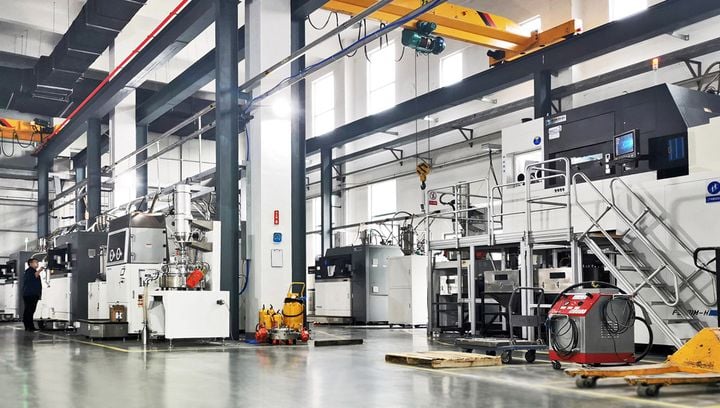
Farsoon said the company has doubled its revenue so far in 2020, defying the overall economic downturn caused by the pandemic.
Farsoon apparently doubled their revenue in China for the first three quarters of 2020 as compared to the first three quarters of 2019. They say:
“In the latter half of 2019, with the rapid raising industrial additive manufacturing applications in China, Farsoon made significantly (sic) progress with increasing sales orders in major industries such as aerospace, manufacturing, and molding – which offers a strong revenue contribution to the first three quarters of 2020.”
Farsoon, if you are not familiar with them, has produced a range of industrial 3D printers since 2009 that include several polymer devices using both SLS and SLM processes, as well as a series of metal 3D printers. All of these devices are targeted at industry and include suitable interfaces for doing so. The company now has operations in Europe and the USA in addition to their headquarters in Hunan, China, and serves at least 16 countries.
It seems that a big part of their recent success is due to their line of metal 3D printers. They say:
“To date, the multiple FS621M systems have been installed at various Chinese large-scale manufacturing customers; and the FS421M has an accumulative sale of over 30 systems globally. Earlier this month, one of Farsoon’s key industry partners Falcontech, a leading manufacturing service provider in the metal additive market, has just received its 20th Farsoon metal system, of which 19 are large-format Farsoon FS621M and FS421M systems – well on the way to their target of 50 machines for Falcontech’s proposed Super AM Factory expansion plan.”
Those are big numbers for industrial 3D printers, as they are not inexpensive. A fleet of 50 metal 3D printers is a massive operation, and one wonders exactly what Falcontech will be doing with them.
In the pandemic, there have been winners and losers as economic shifts occur. Could Farsoon be one of the winners? It seems that’s not exactly what’s happened here. Instead, they say:
“After the impact of the Covid-19 pandemic in China during early February, Farsoon headquarters has seen a return to normal operations in Q2 and Q3. The Chinese AM market has seen a good recovery with increasing sales orders. Farsoon’s production operations have expanded to meet growing demand with multiple shifts working 7 days a week to meet machine delivery dates. On the other hand, Farsoon headquarter is planning a large-scale expansion of production facilities in 2021.”
Apparently China is more-or-less back to normal, and this has allowed Farsoon to continue growing its business. They’re likely capitalizing on the gradual addition of 3D printing capabilities to industry that have been occurring.
Regarding the other markets that have still suffered from pandemic effects, they say:
“In the global market, despite the Covid19 pandemic and economic crisis, Farsoon Europe GmbH has already achieved revenues equal to that of the previous year by end of July, 2020. Farsoon Americas has seen increased business during the second half of 2020 and has actively expanded sales and support capabilities to better serve the North American customers.”
They seem to be doing well, although their subsidiaries are relatively new and thus growth may be a bit easier when you’re starting from a lower point on the scale.
The message here is one that we’ve heard before: 3D printing is not necessarily an industry that is affected by the pandemic, and in fact we’ve seen several companies expand dramatically in the past few months.
Farsoon seems to be another one.
Via Farsoon
